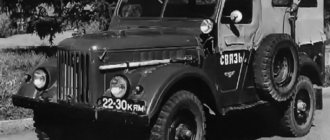The GAZ-3307 truck of the Gorky Automobile Plant has several modifications and has been produced since 1989. Since then, the modification of this car has changed several times. In particular, the engines that were installed on the truck changed. These were both petrol and diesel versions.
Engine for GAZ 3307 truck
So, for example, since 2011, the car received a new series of YaMZ-530 engines, which significantly reduced fuel consumption.
Gas 53 fuel consumption per 100 km gas
Thanks to its high technical characteristics and maintainability, the dump truck continues to operate not only in industrial enterprises, but also in private households. The all-metal, durable body has extension sides and is released from the load by tipping on 3 sides.
A hydraulic cylinder is used as a lift. The power take-off drives a gear pump, which fills the system with oil through pipelines.
The GAZ-53 dump truck has a 2-seater all-metal cabin. Inside the cabin there are places to store tools and spare parts. The instrument panel does not contain an ammeter or oil pressure sensor. Instead, there are signal lamps. The passport number is located on the lower flange of the right side of the cab. The gasoline tank is located under the driver's seat, and the filler tank is located behind the cab, near the door.
Device
The GAZ-3307, unlike its predecessor, received a sprung driver's seat with the ability to adjust the back angle and in the horizontal plane. The instrument panel turned out to be very informative and was made of plastic. The holes for the instruments were completely molded. The front panel was made of metal.
The truck cabin was designed in accordance with the trends of the Soviet period and had angular shapes. At the same time, compared to older versions, there is significantly more space in the cabin. The false door panels received additional side pockets, which could be used as a place to store various small items. Good thermal insulation made it comfortable to stay in the cabin while driving. The cabin of the model was borrowed from the experimental development of the GAZ-4301, presented in 1984. It was distinguished by its increased size and was designed for two people. Getting to the main controls was not difficult, since they were rationally located. Other features include seat belts, a modern dashboard, and soft upholstery on interior panels and doors.
Additionally, the car was equipped with an autonomous pre-heater, allowing you to start the engine without problems in the cold season. Another feature of the model was the air intake pipe running along the hood.
Gasoline modifications of the GAZ-3307 were equipped with a 4-speed manual transmission, and diesel versions were equipped with a 5-speed gearbox. At the same time, it was possible to distinguish a 4-speed gearbox by the characteristic howl emitted when moving.
For the first time, power steering appeared in the steering mechanism. The design itself underwent minor modifications and was a globoidal worm, complemented by a three-ridge roller. Later, a new mechanism with a screw and a ball nut appeared, which made it possible to reduce the force on the steering wheel.
The car was equipped with standard drum brakes with a hydraulic vacuum booster and a hydraulic drive. The parking brake was located on the transmission and was mechanical.
The suspension in the GAZ-3307 has not been changed. The truck had the ability to install an awning and a side. The durable and reliable chassis made it possible to carry heavy loads, therefore it was used for installing various bodies (tow trucks, dump trucks, vans, etc.). Manufactured goods, insulated, grain vans and paddy wagons were created on the basis of the GAZ-3307.
Price of new and used GAZ-3307
The cost of GAZ-3307 varies depending on the modification, release, condition of the car and mileage. Models released later than 20 years ago can be purchased for 100,000-150,000 rubles. Earlier versions will cost more - 350,000-400,000 rubles. At the same time, the average market price of GAZ-3307 is 200,000-250,000 rubles.
Renting a car will cost from 5,700 rubles per shift.
Electrical equipment Fuel consumption gas 53
| GAZ -3307 On a vacuum truck, the driver's cabin is installed in the front part of the frame, and the cargo compartment, in particular the tank for collecting and transporting sewage, is in the rear. Therefore, if the carburetor has not been adjusted correctly, the fuel mixture entering the engine will cause significant damage to it and lead to excessive fuel consumption. |
| GAZ-3307: technical characteristics And in those cases when they occur, the problem turns out to be a violation of the integrity of the float body; in this case, adjusting the fuel level in the float chamber will be practically impossible. The carburetor throttle valve should always be slightly open, and the gasoline mixture at idle speed XX enters the intake tract, bypassing the GDS. |
- length - 6400 mm;
- width - 2470 mm;
- cabin height - 2200 mm.
Gas 53 • IAC dirty or loose contact of IAC block.
Modifications
Over its history, the GAZ-3307 car, from an ordinary dump truck, turned into many different cars. Which became serial modifications.
The most popular of them:
| Main modifications of GAZ-3307 | ||
| Photo | Name | Peculiarity |
| Aerial platform | Designed to lift a person to a height | |
| Campervan | With a van installed for transporting goods | |
| Assenizatorsky | Designed for collecting and transporting various liquids | |
| Snow and swamp vehicle | Car with a frame and a modified GAZ-3307 cabin | |
| Bread | A car with a specialized van installed for transporting bread | |
| Firefighter | Car with tank and fire hydrants | |
| Truck crane | A vehicle with a platform installed for lifting heavy loads | |
| With refrigerator | A vehicle with an installed refrigeration chamber for transporting perishable goods | |
| Garbage truck | Specialized vehicle for collecting and transporting waste | |
| Tank | The vehicle is designed to transport a wide variety of liquids (including food) | |
| Military all-terrain vehicle GAZ 3307 | Designed for transportation of personnel and various cargoes | |
| Snow plow | Vehicle with front bucket installed and additional cleaning equipment | |
Installing HBO on a carburetor
If it is a carburetor, then route the air intake to the pants or exhaust manifold. If there are already air intakes removed from the pan. then there should be a switch (damper) winter - summer. those. The summer one is usually routed to the radiator, and the winter one is routed down to the exhaust manifold.
| Model | D-245.7 u3 | ZMZ-5231 |
| Type | Diesel, 4-stroke, turbocharged, charge air cooled, liquid cooled | Gasoline, 4-stroke, carburetor, liquid cooling |
| Number and arrangement of cylinders | 4, vertical in a row | 8, V-shaped |
| Cylinder operating order | 1–3–4–2 | 1–5–4–2–6–3–7–8 |
| Crankshaft rotation direction | Right | |
| Cylinder diameter and piston stroke, mm | 110×125 | 92×88 |
| Working volume, l | 4,75 | 4,67 |
| Compression ratio | 17 | 7,6 |
| Rated net power, kW (hp), not less | ||
| at a crankshaft speed of 2400 min-1 | 87,5 (119) | — |
| at a crankshaft speed of 3200 min-1 | — | 83 (113) |
| Maximum net torque, N×m (kgf×m) | ||
| at a crankshaft speed of 1300–1600 min-1 | 413 (42) | — |
| at a crankshaft speed of 2000–2500 min-1 | — | 294,3 (30) |
| Minimum stable crankshaft rotation speed at idle, min-1 | 800 | 600 |
| Ventilation system | Closed | |
| High pressure fuel pump (HFP) | SRZ (CRS-Bosch) or in-line 4-piston 833.1111005.01 (YAZDA) with booster pump | — |
| Fuel lift pump | Plunger type for manual (with injection pump “833“)* and automatic fuel pumping | |
* For SRZ.Z injection pump engines, a filter with a built-in manual pump is used.
Specifications
An example of a homemade tractor using a ZMZ 53 engine. Someone is trying to adapt an injector to a ZMZ 53 instead of a standard gas 53 carburetor, but remaking the fuel system is not easy. Anti-toxic systems Controlled by vacuum from the carburetor via a thermal vacuum switch Exhaust gas recirculation system Controlled by an electronic unit for engines with injection pump YAZDA 833 Oil crankcase ventilation system Closed Closed with forced suction of crankcase gases Pressurization system Gas turbine, with one tube compressor S14 179 01 or TKR 6.
Suspension and chassis. Gasoline consumption 53 per 100 km
| Fuel consumption on the GAZ-3307 Today's drivers say that 33 liters are already spent, but otherwise the car has not changed in any way during all this time, as Vladimir from Novgorod wrote. If, for example, you drive a car constantly at a speed of 60 kilometers per hour, then the fuel consumption is at the level of 19 liters, but if you just add gas and increase the speed by 20 kilometers more, the consumption immediately begins to increase and reaches 27 liters. |
- operating voltage – 12V;
- battery – 6ST-75;
- voltage controller – G250-G2;
- starter – 230-A1;
- ignition winding – B-114 with switch TK-102A.
Design • The system consists of pneumatic valves located in the air damper and a system of levers that connect the throttle and air damper.
Brake system
Brake system GAZ-3307
Components of the brake system GAZ-3307 The brake system of the GAZ 33-07 truck consists of three main subsystems (circuits). They work on different axes and in different cases.
The first circuit, the main one, works on all wheels and is a permanent braking system.
The second circuit is essentially a spare circuit and works in case of brake failure on the front or rear wheels.
The third circuit is a handbrake that blocks the wheels due to the gearbox.
General information about GAZ-3307
The Gaz-3307 car was supposed to replace the old generation of 52/53 cars, which became very outdated in the 80s. The development of engineers set a new benchmark in the creation and production of freight transport. The design has been completely revised: the rectangular shape has replaced the rounded one. The windshield has become larger, increasing visibility. The hood became larger, the headlights remained round.
The cabin doors have become larger and the landing area has increased. However, the design still lacked handrails, which made landing problematic. Inside the car there are two seats and a lot of free space; the interior arrangement is simple and boring.
History of creation
The predecessor of the GAZ 3307 is the GAZ-54 medium-tonnage truck
| Year | Description |
| 1986 | Start of creation and modeling of the GAZ-3307 truck |
| 1988 | Launch of mass production in small volumes |
| 1989 | Start of full series production |
| 1991 | Serial production of GAZ 3307 modifications |
| 1994 | Improved model GAZ 3308. Serial production. |
| 1995 | Removal of the GAZ 3307 model from production in favor of the 3308 |
In 1986, the Gorky Automobile Plant began developing a fourth-generation model, based on the successful models of medium-duty trucks GAZ-53 and GAZ-54. This decision was driven by the need for a modern truck with interchangeable components and higher performance.
In 1988, a test production line of the GAZ 3307 model was launched, which marked the beginning of full production of this truck.
In 1989, full-scale mass production of the GAZ 3307 was launched, with the removal of old models and the development of modifications of the car began.
In 1991, full serial production of a wide variety of modifications of the GAZ 3307 truck was launched.
In 1994, an improved model of the truck was developed, with improved technical characteristics, but maintaining the appearance.
In 1995, the outdated GAZ 3307 model was completely removed from mass production in favor of the new medium-duty model GA 3308 (and later 3309).
See also the article GAZ-3309 truck and its history
GAZ 3308. Dump truck.
Although subsequent models were practically a copy of their predecessor, the history of the GAZ 3307 (as a model line) can be considered over.
Features of GAZ-3307/09 engines • Gasoline consumption 53 per 100 km
The new diesel engine proved to be so successful that it was planned to completely abandon the production of carburetor engines by 1996, but at that time the country was hit by another wave of crisis. The difference is quite large, and if in the first case we can talk about fuel economy, then with an increase in fuel it is already worth talking about greater transport appetite.
| Engine | Consumption (city) | Consumption (highway) | Flow (mixed) |
| 4.4 MT 126 hp diesel (mechanical) | — | — | 19.5 |
| 4.7 MT 125 hp gasoline (manual) | — | — | 17.2 |
Advantages and disadvantages
GAZ-3307 is a fairly popular car all over the world, and naturally, like any famous car, it has advantages and disadvantages.
Advantages
- Loading capacity - for its weight and dimensions, it can transport quite a lot;
- Consumption - oil and fuel consumption is economical;
- Modifications - the ability to install almost any of the known platforms.
Flaws
- Price - a new Gas 3307 and even a well-maintained one is expensive;
- Speed - a relatively slow truck;
- Lack of parts - due to the statute of limitations, there is a problem with some components in terms of replacement.
Device K-135 Fuel consumption gas 53
| Gas 3307 does not work at idle. The power unit ZMZ-524400 is a V-shaped, 8-cylinder, 4-stroke gasoline engine with liquid cooling, with a distributed injection power system, an OHV valve mechanism with hydraulic compensators, an aluminum block and cylinder head, corresponding to the fourth environmental class Euro-4. Despite its outdated design and technical component, the GAZ-53 sewer truck still remains popular in the domestic space. |
- modified liquid cooling system;
- the cylinder head has highly turbulent combustion chambers;
- the pistons have grooves for two-millimeter piston rings;
- The main bearing caps are mounted in the cylinder block without spikes.
Video
When developing the model, broad unification of units and components was considered a priority. As a result, the GAZ-3307 received many elements from the GAZ-53-12, which significantly facilitated repair, operation and maintenance, and again made it possible to reduce the cost of the car. At the same time, the truck now has a more spacious operator’s cabin with a heating and ventilation system.
The model, by analogy with its predecessor, received a hood layout. The main differences were the tail and the modernized operator's cabin. The engine has undergone minor changes. The brand positioned the car itself as a kind of transitional version, which was subsequently planned to be replaced by more economical diesel modifications. In 1992, the Gorky Automobile Plant produced a batch of GAZ-3307, which received Japanese Hino units. However, this version was not in demand. Instead of purchasing foreign engines, the company began producing its own diesel engines.
In the early 90s, the carburetor version was completely forced out of the assembly line. However, soon the demand for diesel modifications of the GAZ-3307 fell. The model, especially popular in agriculture, turned out to be of no use to anyone after the collapse of collective farms. The production of diesel engines eventually became unprofitable. The plant continued to produce exclusively gasoline variants in limited quantities.
The Gorky Automobile Plant offered various modifications of the model:
- GAZ-33070 – flatbed truck (chassis) equipped with a carburetor engine “ZMZ-511” (“ZMZ-513”, “ZMZ-5233”);
- GAZ-33072 – chassis with a carburetor unit “ZMZ-511” (“ZMZ-513”, “ZMZ-5233”), designed for installation of a dump body;
- GAZ-33073 - a cargo taxi, which received a door in the rear side, a body with an awning, a folding ladder and folding benches;
- GAZ-33074 – extended chassis with a carburetor power plant “ZMZ-513” (“ZMZ-5234”);
- GAZ-33075 is an onboard truck (chassis) with a bi-fuel engine (“ZMZ-513”), designed to run on A-80 gasoline or liquefied petroleum gas;
- GAZ-33078 – flatbed truck (chassis) with a Japanese-made Hino W04CT diesel unit;
- SAZ-3507-01 – a dump truck based on the GAZ-33072 with a body volume of 5 cubic meters, a load capacity of 4130 kg and 3-sided unloading;
- SAZ-35072 is a dump truck with a load capacity of 4250 kg, a body volume of 4.5 cubic meters and 1-sided unloading.
Since 2000, the GAZ-3307 has been used by various brands to produce modifications with an extended frame. Such versions retained the same carrying capacity, but could transport larger loads.











